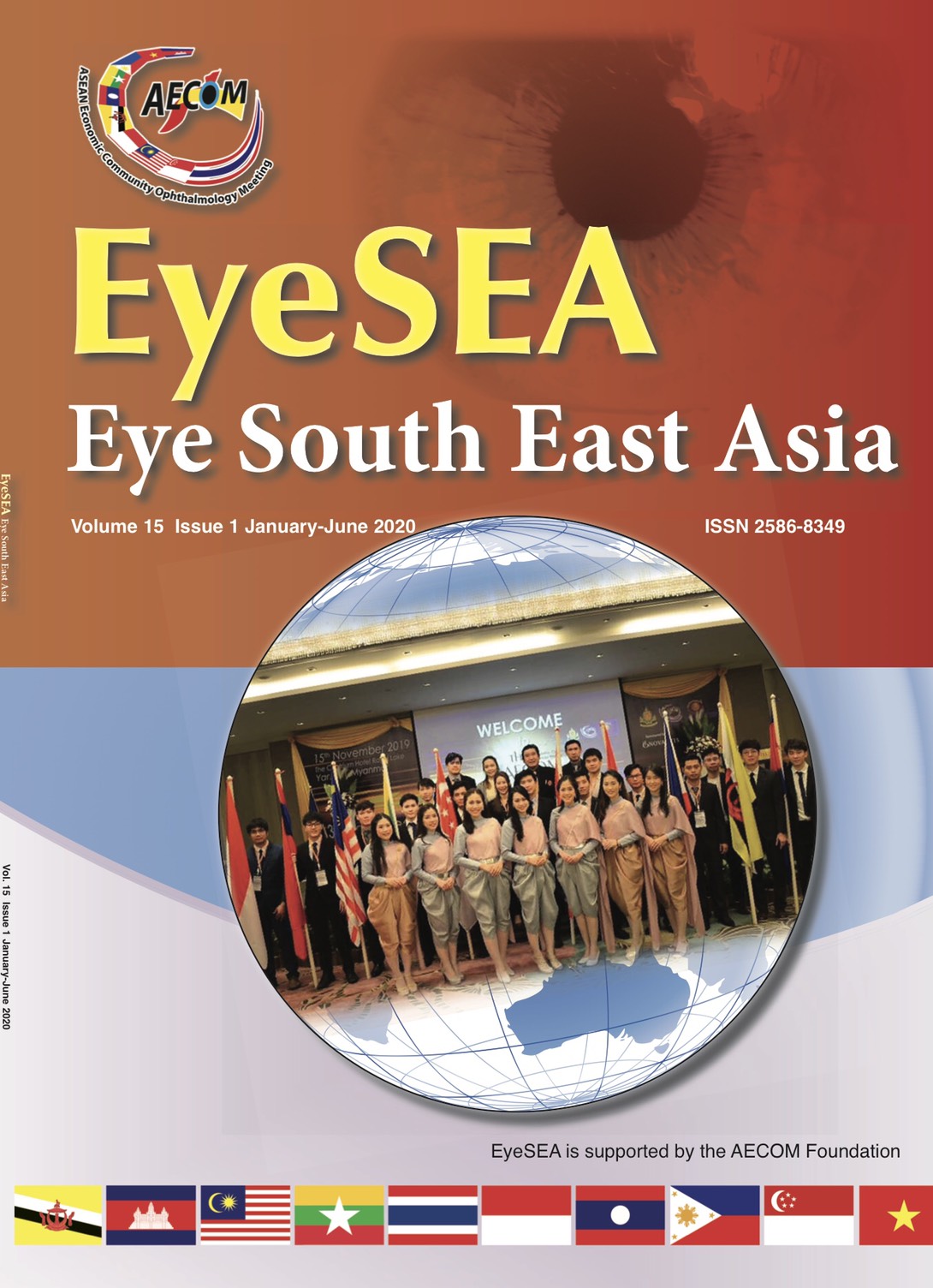Clinical outcomes and preoperative predictive factors of success in single pneumatic retinopexy for primary rhegmatogenous retinal detachment at a tertiary care center.
Main Article Content
Abstract
ABSTRACT
PURPOSE: To evaluate the success rate of pneumatic retinopexy (PR) for treatment of primary rhegmatogenous retinal detachment (RRD) and to explore preoperative factors associated with the success rate of PR.
METHODS: We conducted a retrospective study, having reviewed medical records of all patients diagnosed with primary RRD that underwent a single PR in Thammasat university hospital, Thailand, during 2016 to 2018. Preoperative ocular characteristics, postoperative anatomical and visual outcomes were collected.
RESULTS: 68 eyes of 68 patients were enrolled. Success rate of a single PR was 42.6%. The significant predictors were location of lowest retinal breaks (P < 0.001) and extension of retinal detachment (P < 0.002). In multivariate logistic regression analysis for the group with successful outcome, the patients whose lowest retinal breaks were located within thhe superior 2 clock hours were found to be 13.55 times more likely to respond successfully to PR (OR=13.55, 95%Cl 3.82-48.01, P<0.001). The success rate of PR was 0.722 times when the extension of retinal detachment increased for 1 clock hour (OR=0.722, 95%Cl 0.535-0.974, P=0.033). Out of the 29 patients from the success group, 27 (93%) patients had improvement of BCVA. Postoperative complications included new or missed break (12%), subconjunctival gas (10%), raised IOP (4%), vitreous haemorrhage (3%) and subretinal gas (1%).
CONCLUSIONS: The success rate of a single PR in primary RRD was 42.6%. The location of lowest retinal breaks and extension of retinal detachment were significant preoperative predictors of success in single PR for RRD. Final BCVA was improved in most patients with successful PR.
Article Details
References
1. Stewart S, Chan W. Pneumatic retinopexy: patient selection and specific factors. Clinical ophthalmology (Auckland, NZ). 2018;12:493.
2. Davis MJ, Mudvari SS, Shott S, Rezaei KA. Clinical characteristics affecting the outcome of pneumatic retinopexy. Archives of Ophthalmology. 2011;129(2):163-6.
3. Flaminiano RE, Sy RT, Arroyo MH, Tamesis-Villalon P. Causes of failure of pneumatic retinopexy. Philippine Journal of Ophthalmology. 2004;29(3):122-6.
4. Cohen E, Zerach A, Mimouni M, Barak A. Reassessment of pneumatic retinopexy for primary treatment of rhegmatogenous retinal detachment. Clinical ophthalmology (Auckland, NZ). 2015;9:2033.
5. Goldman DR, Shah CP, Heier JS. Expanded criteria for pneumatic retinopexy and potential cost savings. Ophthalmology. 2014;121(1):318-26.
6. Chan CK, Lin SG, Nuthi AS, Salib DM. Pneumatic retinopexy for the repair of retinal detachments: a comprehensive review (1986–2007). Survey of ophthalmology. 2008;53(5):443-78.
7. Ling J, Noori J, Safi F, Eller AW, editors. Pneumatic retinopexy for rhegmatogenous retinal detachment in pseudophakia. Seminars in ophthalmology; 2018: Taylor & Francis.
8. Jung JJ, Cheng J, Pan JY, Brinton DA, Hoang QV. Anatomic, visual, and financial outcomes for traditional and nontraditional primary pneumatic retinopexy for retinal detachment. American journal of ophthalmology. 2019;200:187-200.
9. Hilton GF, Das T, Majji AB, Jalali S. Pneumatic retinopexy: principles and practice. Indian journal of ophthalmology. 1996;44(3):131.
10. Grizzard WS, Hilton GF, Hammer ME, Taren D, Brinton DA. Pneumatic retinopexy failures: cause, prevention, timing, and management. Ophthalmology. 1995;102(6):929-36.
11. Tornambe PE, Hilton GF, Poliner LS, Brinton DA, Flood TP, Orth DH, et al. Pneumatic retinopexy: a multicenter randomized controlled clinical trial comparing pneumatic retinopexy with scleral buckling. Ophthalmology. 1989;96(6):772-84.
12. Hazzazi MA, Al Rashaed S. Outcomes of pneumatic retinopexy for the management of rhegmatogenous retinal detachment at a tertiary care center. Middle East African journal of ophthalmology. 2017;24(3):143.


